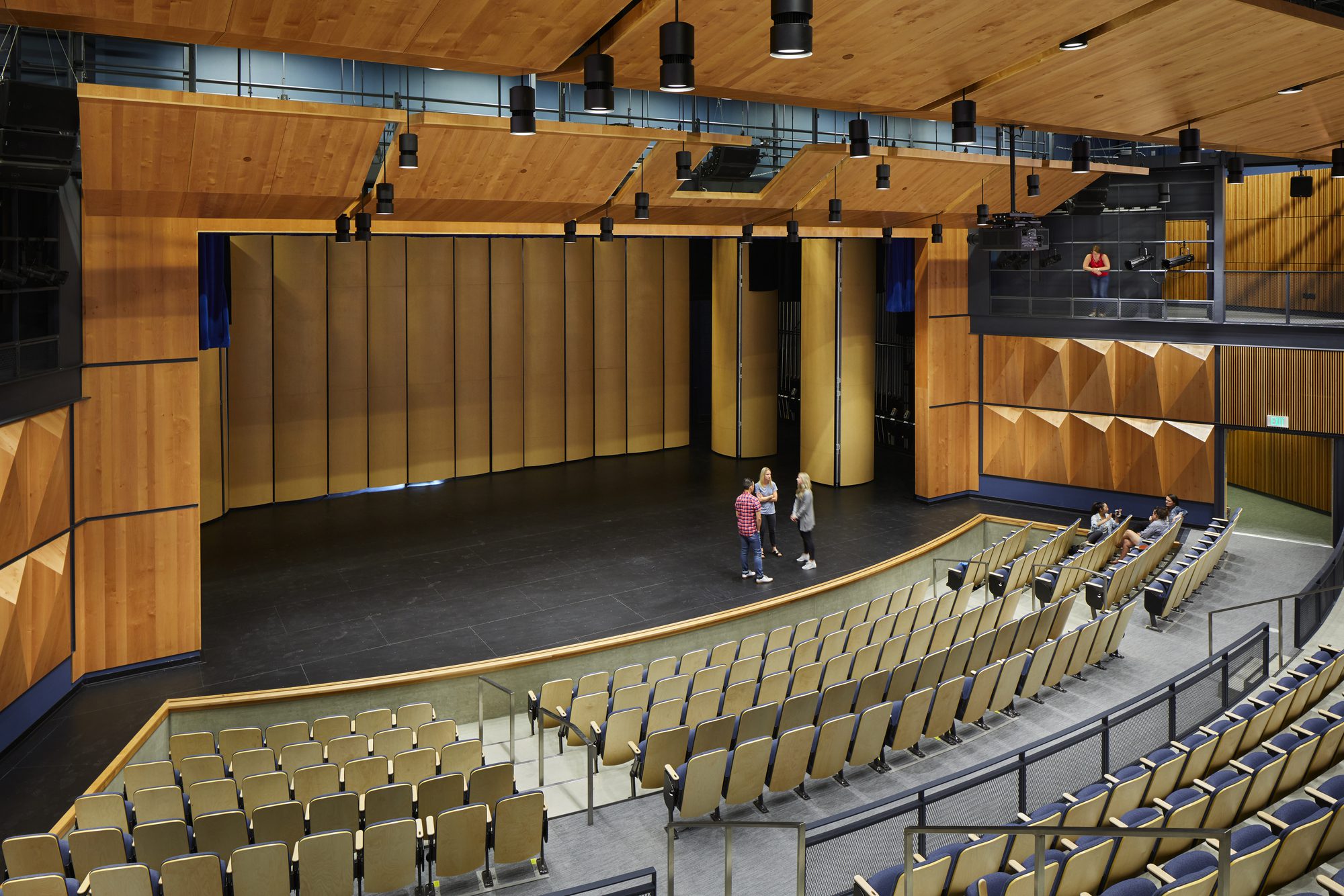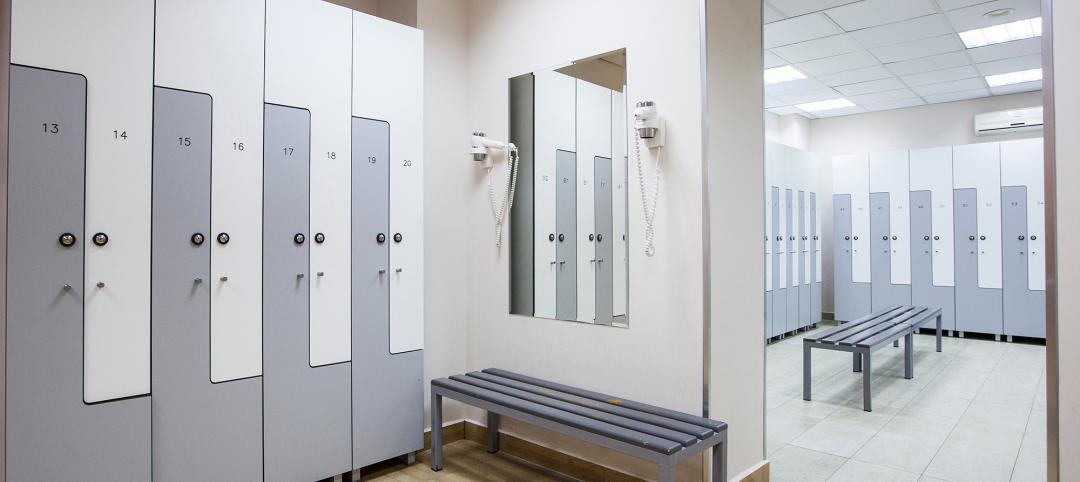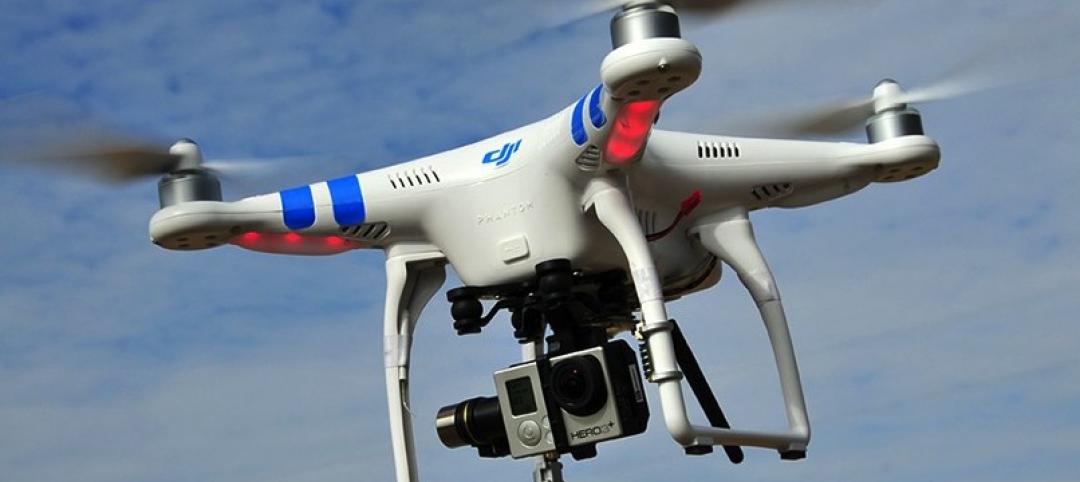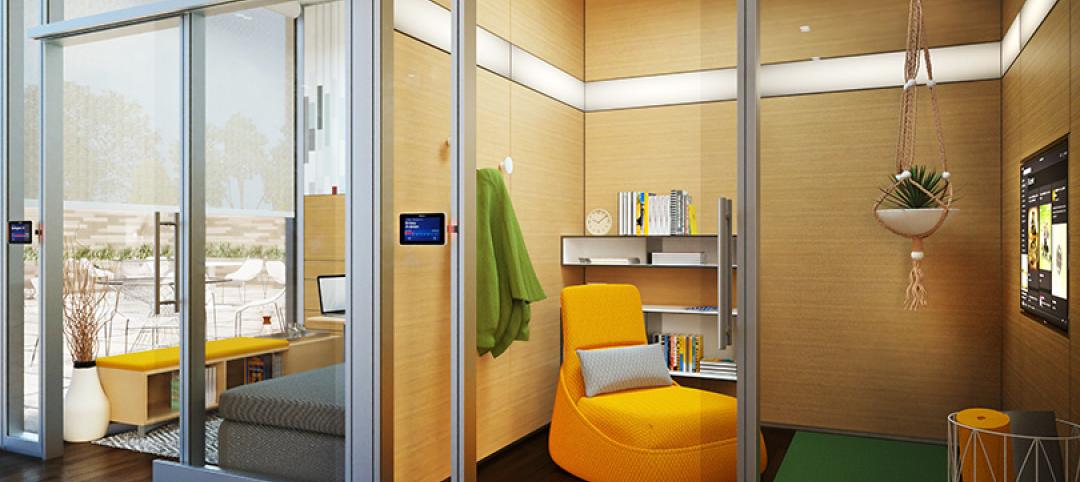Well-designed spaces foster feelings of safety and certainty for all who use them. What that means, though, and what it implies for the physical environment can vary widely depending on who those users are. This challenge requires designers to harness empathetic, human-centric design to meet a variety of needs within a space.
This design approach is especially critical in schools. High schools bring together kids from diverse backgrounds during a pivotal time in their development. Some students may come from households that provide the emotional security they need, while for others, school may be their only opportunity to find that security and structure.
Make a Place
We were inspired by all the students we met throughout the Federal Way High School project, from the drama kids who were born to perform and told us, “we don’t care if there’s an audience, we just want a really big stage,” to a shy girl I talked to who just wanted “a place to be alone.”
Adults can get tripped up by the premise that teens are aloof and rebellious and then look to design to enforce control and discipline. The truth is, these kids are committed to their school—the traditions, programs, teachers, and staff. The new building gave us the opportunity to build on the pride of this place with a design that goes beyond just typical classroom and academic facilities.
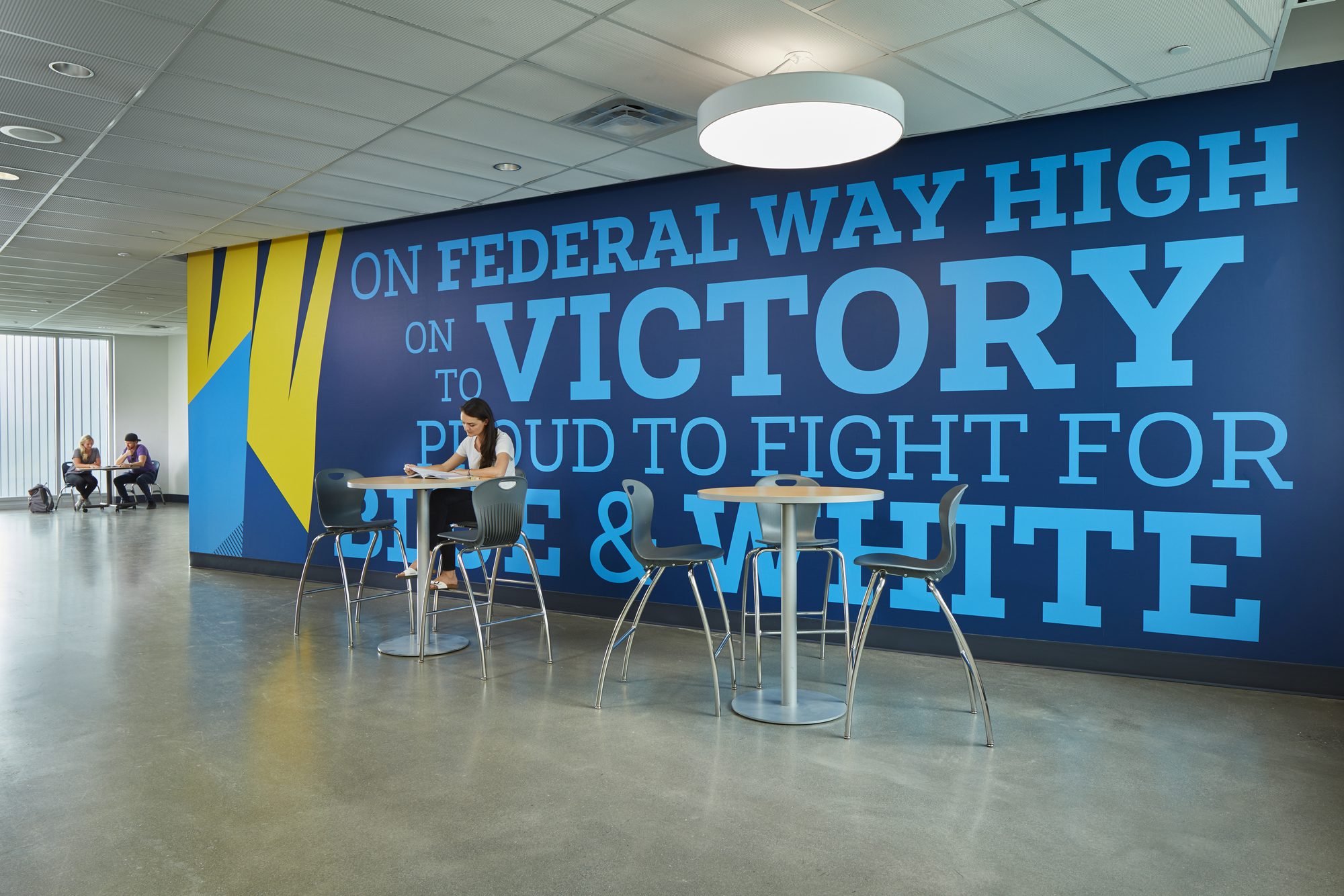
The building is organized into two halves—one half for the auditorium, gymnasiums, and activity rooms, and the other that provides the bulk of the building’s classroom space. A network of communal spaces connects the building’s two halves and produces opportunities for students to “see and be seen” by their peers, but also quiet nooks to find solitude without feeling isolated. These third places are vibrant, comfortable, communal places to share ideas and form relationships. From breakout zones in widened hallways to glass-walled small group rooms, third places support the concept of educating the whole child—socially, emotionally, and academically.
Graphics throughout the school incorporate ideas, language, and character contributed by the student body through a survey conducted by the design team. Vibrant murals and recurring feather motifs pay homage to the school’s eagle mascot in an array of applications to celebrate the diverse ethnic makeup of the student body, and the spirit, identity, and traditions of Federal Way High School.
Amplify Connections
Federal Way High School’s success is due to collaboration that centered around listening. Initially, the project was met with some opposition and distrust. The City of Federal Way is young, but many people have lived there for generations. Recent years have brought rapid change and development, and residents feel protective of their community’s history. Voters wanted assurance that their tax dollars would fund quality design that resulted in a school the whole community would be proud of, so public outreach was paramount from the beginning of the project until the very end.

Our team was invested in building support, consensus, and trust in the project with the school district, students, teachers and staff, and the community at large. A range of forums, interactive events, and presentations provided opportunities for people of all backgrounds to express themselves and participate in the design process. The design team and the district proved that the high school could honor the history of the site in a way that empowered students and long-time residents alike.
The new building’s scale and location reclaim its presence on the Pacific Highway. Its visibility from the public way allows for passive security that promotes inclusivity rather than surrounding the school with physical barriers. Open boundaries invite visitors to the ball fields, walking paths, and the storm pond habitat.
Interior design emphasized great sightlines and visual connection so adults can provide supervision without impeding students’ freedom. Open spaces, nooks, classrooms, and meeting rooms were all designed with intentional geometry and window placement so everyone has a clear view of what is happening in a given space.
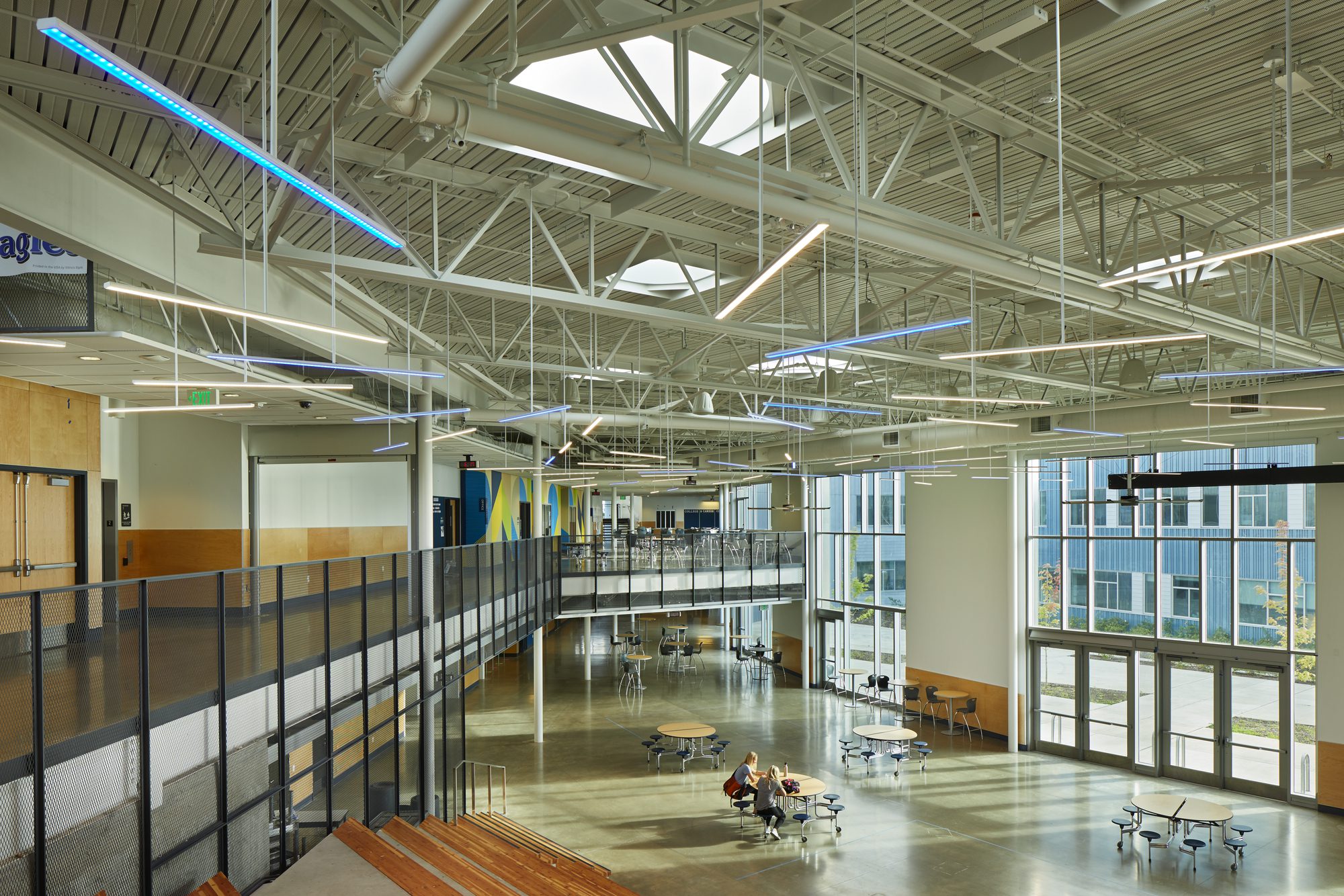
Plan for Change
Our team understood that anything built on the assumptions of today could be an impediment to the ideas of tomorrow. We regularly challenged ourselves with “What’s the least we could build?” to avoid erecting obstacles to future flexibility.
The school district sought not only the best learning environment for today but to imagine the possibilities for learning environments in the future. Rather than a collection of unique and specialized spaces, the priority was to make great space with universal appeal suitable for many uses that can be easily manipulated and encourage experimentation.
From the start, spaces have been used in ways we didn’t imagine. A small, glass enclosed study space was being utilized as a drop-in college counseling meeting point for academic advisors and students. Many of our public school teachers are used to working with very little, so they’re innovative and creative in how they use space and resources. Some of the key ideas of multi-use spaces in the school were directly inspired by the stories they shared, such as the two-sided theater concept, created in response to learning about the annual dinner theater variety show from the choir teacher. This event had been held at an alternate site due to the limited size of the old theater, but the new theater can easily accommodate this event and inspire more like it.
The vision for Federal Way High School was to honor the school’s heritage while celebrating its present and creating opportunities for growth into the future. It is my greatest hope that the school that exists now will inspire new generations of teachers, staff, and students to create their own stories, a renewed history, and a new place of pride in their community.
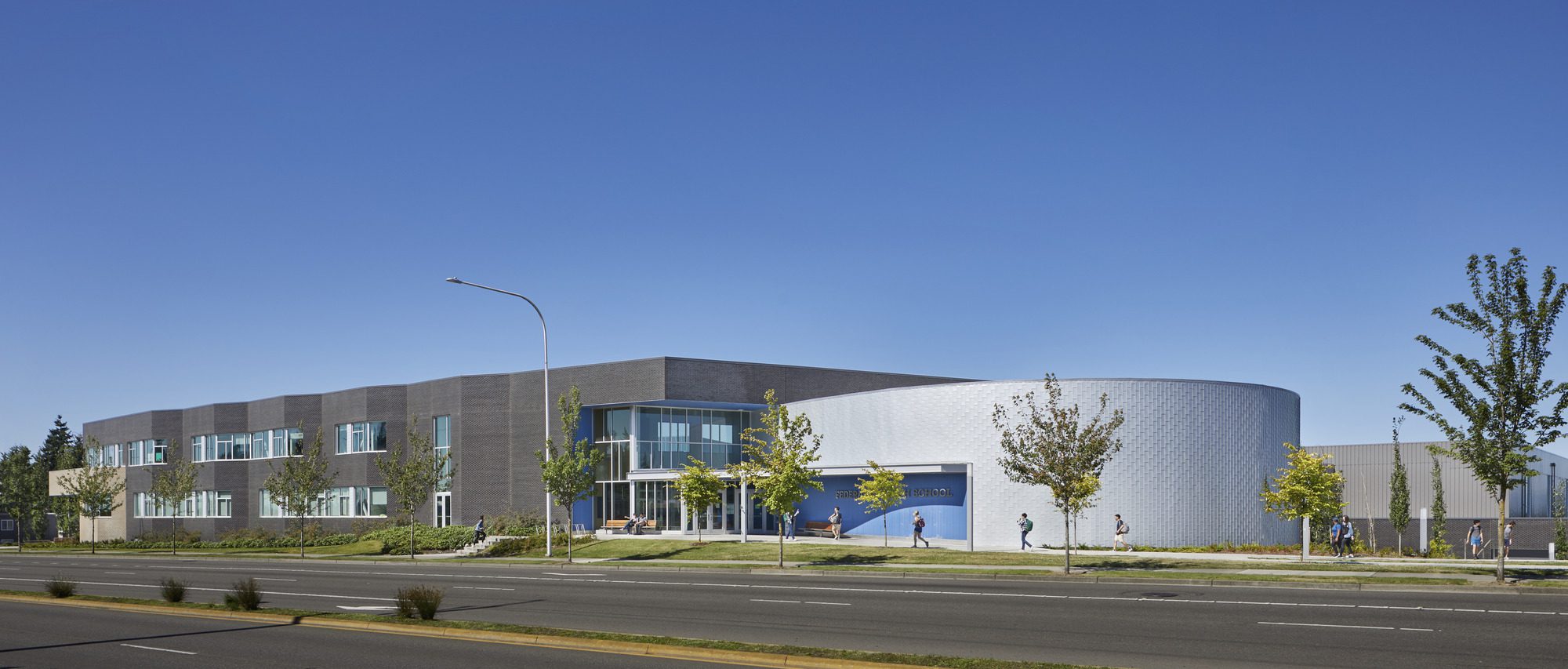
More from Author
SRG Partnership | Jul 29, 2024
Inclusive design for locker rooms: Providing equitable choice and access
SRG designers pose the question: What would it look like if everyone who wanted to use a restroom or locker room could?
SRG Partnership | Aug 10, 2022
Increasing the skilled workforce through career technical education
There is a shortage of skilled workers in the United States, a gap that has only gotten wider with the advent of COVID.
SRG Partnership | Aug 8, 2022
Mass timber and net zero design for higher education and lab buildings
When sourced from sustainably managed forests, the use of wood as a replacement for concrete and steel on larger scale construction projects has myriad economic and environmental benefits that have been thoroughly outlined in everything from academic journals to the pages of Newsweek.
SRG Partnership | Jun 9, 2016
Designing for interdisciplinary communication in university buildings
Bringing people together remains the main objective when designing academic projects. SRG Design Principal Kent Duffy encourages interaction and discovery with a variety of approaches.
SRG Partnership | May 21, 2015
How CLT wood construction affects project cost
SRG Partnership's Emily Dawson shares insights on the installation, availablilty, and cost of cross-laminated timber (CLT) construction, based on the firm's recent project at the Oregon Zoo.
SRG Partnership | Apr 9, 2015
How one team solved a tricky daylighting problem with BIM/VDC tools, iterative design
SRG Partnership's Scott Mooney describes how Grasshopper, Diva, Rhino, and 3D printing were utilized to optimize a daylighting scheme at Oregon State University's new academic building.
SRG Partnership | Mar 23, 2015
Drones for AEC: How every stage of a building project can benefit from drone technology
From photo-mapping to aerial progress videos, SRG Partnership's Dmitriy Molla studies real-world applications for unmanned aerial vehicles.
SRG Partnership | Feb 9, 2015
The generalist architect vs. the specialist architect
The corporate world today quite often insists on hiring specialists, but the generalists have an intrinsic quality to adapt to new horizons or even cultural shifts in the market, writes SRG Partnership's Gary Harris.
SRG Partnership | Jan 5, 2015
Beyond training: How locker rooms are becoming more like living rooms
Despite having common elements—lockers for personal gear and high-quality sound systems—the real challenge when designing locker rooms is creating a space that reflects the attitude of the team, writes SRG Partnership's Aaron Pleskac.
SRG Partnership | Dec 18, 2014
In response to ultra-open and uber-collaborative office environments
Susan Cain’s bestselling 2012 book, "Quiet: The Power of Introverts in a World That Can’t Stop Talking" has made an impact on how we understand our current workforce, recognizing that at least one-third of the people we work with are introverts, writes SRG Partnership's Susan Gust.

